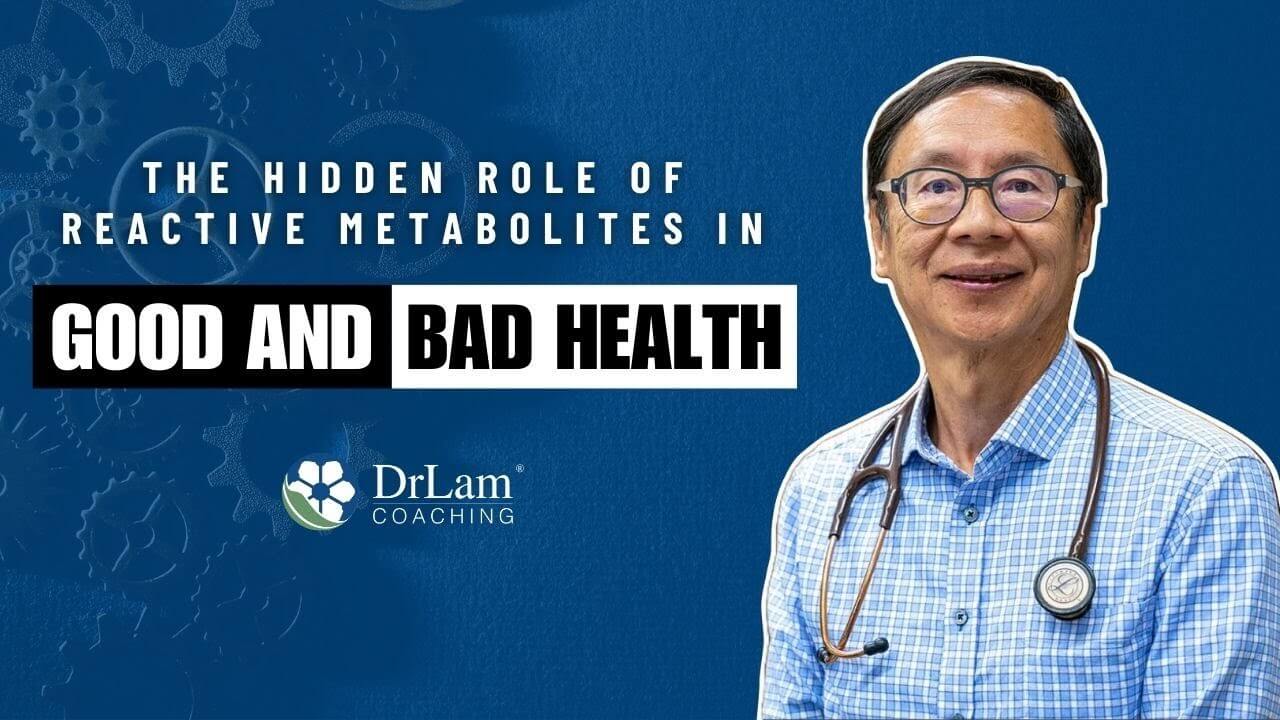
 Metabolism is a term that is used to describe all chemical reactions involved in maintaining the living state of the cells and the organism. They can be anabolic (building up) or catabolic (breaking down) in nature. A balanced metabolism is critical to good health and metabolite processing. A damaged metabolism can lead to a buildup of unwanted by-products. All substances therefore are capable of being, and are in fact, looked at as a poison in one degree or another. The right dose differentiates a poison from a remedy, and from being toxic to being beneficial. The body can defend itself against small doses of toxins, and they may even be beneficial as they stimulate protective mechanisms. A large onslaught of toxins, or chronic toxic overload (such as a stealth infection, heavy metal accumulation, ingestion of certain medications), can ruin your health.
Metabolism is a term that is used to describe all chemical reactions involved in maintaining the living state of the cells and the organism. They can be anabolic (building up) or catabolic (breaking down) in nature. A balanced metabolism is critical to good health and metabolite processing. A damaged metabolism can lead to a buildup of unwanted by-products. All substances therefore are capable of being, and are in fact, looked at as a poison in one degree or another. The right dose differentiates a poison from a remedy, and from being toxic to being beneficial. The body can defend itself against small doses of toxins, and they may even be beneficial as they stimulate protective mechanisms. A large onslaught of toxins, or chronic toxic overload (such as a stealth infection, heavy metal accumulation, ingestion of certain medications), can ruin your health.
A metabolite is defined as a product of metabolism. All substance needs to be broken down into smaller pieces as part of the excretion process to rid the body of unwanted by-products. Toxic substances the body receives from daily living include hormone laced food, polluted air, and unclean water. Excessive metabolites are toxic to the body, and if coupled with damaged intrinsic metabolic or detoxification pathways, can be devastating.
The role of metabolites has been under intense study by the pharmaceutical industry for a long time. The normal process of breaking down medications often generates metabolites that have intrinsic chemical reactivity towards the rest of the body. These by-products therefore have the potential to alter biological function at the cellular level and initiate adverse side effects.
While we may be aware of obvious toxins (such as cyanide) and avoid ingesting them, few are on the alert to know that many foreign substances (including medications and nutritional supplements) can become toxic after it passes through the liver. The liver is the primary organ responsible for breaking down chemical substances in our body into metabolic by-products, which can then be excreted via the renal system. Consider the common pain relief medication acetaminophen. When a standard dose of acetaminophen is taken, it is normally metabolized in the liver. When high doses are taken, the glucuronidation and sulfation detoxification pathways in the liver becomes saturated and metabolism relies more on other pathways such as P450-dependent glutathione conjugation. If glutathione cannot regenerate as quickly as glucuronic acid and sulfate, toxicity in the liver can result, particularly for chronic users of high dose acetaminophen. This risk is seldom addressed until a person is in trouble.
The availability of enzymes to perform the metabolic breakdown work, in the liver, can vary greatly between individuals and, as a result, the efficacy of metabolism of different compounds is person specific. Some people can handle great insult to the liver and show no clinical symptoms, while others are not so fortunate. They succumb to the smallest amount of toxic metabolite when generated in the liver. Genetics play a big role , as well as lifestyle, diet, and the volume of medication taken.
 It is also important to note that the metabolism of chemical substances such as medications does not always lead to toxicity and, in some cases metabolites can be used to our advantage in clinical medicine. For example, codeine is a common pain relief medication. When codeine passes by the liver, it is metabolized to norcodeine, codeine-6-glucuronide, and morphine. The metabolite morphine is the most potent and important in the pain relieving effect of the medication. The enzyme responsible for this chemical breakdown pathway is known to vary greatly among different individuals, which accounts for why some patients notice large effects with small doses because they are extensive metabolizers while others barely notice the effect even with large doses.
It is also important to note that the metabolism of chemical substances such as medications does not always lead to toxicity and, in some cases metabolites can be used to our advantage in clinical medicine. For example, codeine is a common pain relief medication. When codeine passes by the liver, it is metabolized to norcodeine, codeine-6-glucuronide, and morphine. The metabolite morphine is the most potent and important in the pain relieving effect of the medication. The enzyme responsible for this chemical breakdown pathway is known to vary greatly among different individuals, which accounts for why some patients notice large effects with small doses because they are extensive metabolizers while others barely notice the effect even with large doses.
The basic principle of desired drug metabolism is to convert a lipophilic medication or xenobiotic to hydrophilic metabolites so it can be more readily excreted from the body in a chemically inert form rather than accumulating within. In this process of breakdown, metabolites are generated. Unfortunately, not all metabolites are inert. Some are active. The biotransformation of relatively inert metabolite chemicals to highly active and reactive metabolites are commonly referred to as bioactivation. This is usually thought of as the initial event in many chemically induced toxicities.
Considering that the liver is the organ most exposed to a high concentrations of drug after oral administration, it is therefore the organ most vulnerable to damage by medications and drugs.
The body has built in detoxification mechanism in place to convert natural compounds into inert metabolites prior to excretion. Problems come usually when foreign or synesthetic compounds, such as drugs and herbs, are introduced. The body does not have the built in detoxification mechanism to do the job fully and completely. Unwanted metabolite buildup can occur. Some of these metabolite are not inert but active. In most cases, the build up of chemically active metabolites is temporary and the body eventually gets rid of it. In other cases, such as with toxic metal like mercury, it never leaves the body on its own.
Prevention of active metabolite-mediated toxicity is important, especially for those who are weak and fragile. They include those recovering from trauma, chronic disease sufferers, and the aging population as a whole. Those, already with adrenal fatigue, are particularly at risk.
Chemically active metabolites can cause toxicity either by direct extension of the properties of the mother compound, or are dependent on the pharmacology of the metabolite itself. They are therefore called reactive metabolites. Damage may be widespread or cell-specific. Cell death may be affected by various mechanisms.
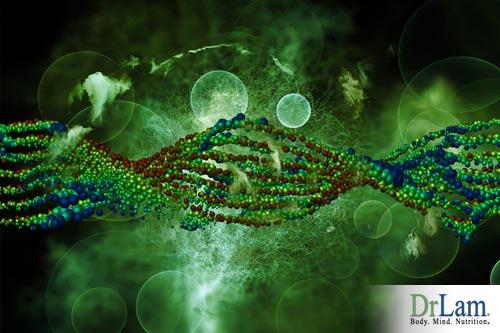 Well known groups of reactive metabolites include reactive oxygen species, unstable conjugates, quinone, imine quinone, quinone methide, arene oxides. Reactive metabolites are usually electron deficient molecules called free radicals. They are short lived, but they can be transported from one tissue to another, where biochemical insults occur. They can directly react with proteins causing changes in protein structure. These modified proteins can be damaging to the body. Chemically reactive electrophiles can also react with nucleic acids on the DNA, leading to DNA structure change or gene expression. Changes in DNA can lead to mutagenicity, teratogenicity or ultimately carcinogenicity. Fortunately, the body has an internal system of identifying such reactive metabolites. Once detected, an inflammatory and immune response will be activated to neutralize them. Unfortunately, not all bodies can do this effectively.
Well known groups of reactive metabolites include reactive oxygen species, unstable conjugates, quinone, imine quinone, quinone methide, arene oxides. Reactive metabolites are usually electron deficient molecules called free radicals. They are short lived, but they can be transported from one tissue to another, where biochemical insults occur. They can directly react with proteins causing changes in protein structure. These modified proteins can be damaging to the body. Chemically reactive electrophiles can also react with nucleic acids on the DNA, leading to DNA structure change or gene expression. Changes in DNA can lead to mutagenicity, teratogenicity or ultimately carcinogenicity. Fortunately, the body has an internal system of identifying such reactive metabolites. Once detected, an inflammatory and immune response will be activated to neutralize them. Unfortunately, not all bodies can do this effectively.
While reactive metabolites have been well studied in medications by the pharmaceutical industry, few advances have been made to fully understand the role they play when part of nutritional supplements such as vitamins, glandular, herbs, and hormones used frequently in the adrenal fatigue setting.
Nutritional supplements, while natural, also needs to be broken down and converted to inert metabolite for excretion.
Consider the following:
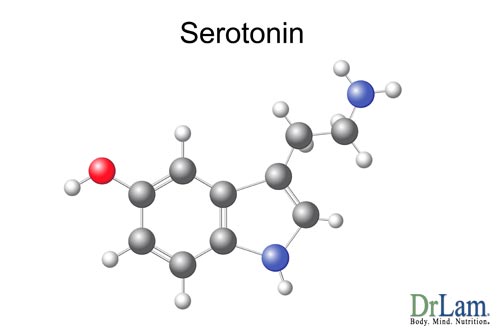
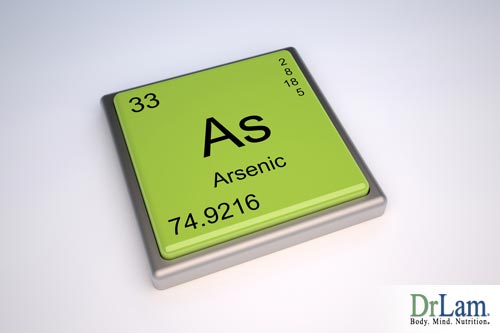
 Just because a compound is natural therefore does not mean it is harmless. It is important to remember that a compound is only beneficial to the body as a whole if there is a net positive result after factoring in the energy reserve needed to process such nutrients. What is the burden placed on the liver to break it down, the degree of damage by its reactive metabolites, and the body’s ability to remove the pollution generated from metabolite transportation through the extracellular matrix to the kidney for ultimate excretion? A body that is weak often cannot tolerate natural compounds that are viewed as effective otherwise.
Just because a compound is natural therefore does not mean it is harmless. It is important to remember that a compound is only beneficial to the body as a whole if there is a net positive result after factoring in the energy reserve needed to process such nutrients. What is the burden placed on the liver to break it down, the degree of damage by its reactive metabolites, and the body’s ability to remove the pollution generated from metabolite transportation through the extracellular matrix to the kidney for ultimate excretion? A body that is weak often cannot tolerate natural compounds that are viewed as effective otherwise.
Therefore, not all natural compounds are good for the body, whether it be a vitamin, enzyme, or mineral. The common misconception that all vitamins are good for you regardless of circumstance is too simplistic a thought process that fails to factor in the body’s complexity, especially if it is in a weakened state. Just because a natural compound can be tolerated by the majority does not mean that it can be tolerated and beneficial to all people.
No matter how good a natural compound is in theory, the body will likely experience overall negative effects if it is unable to process properly and promptly and allowed to accumulate in the body over time. The more unwanted metabolites are generated, whether the original source is from food, medication, or nutritional supplements, the heavier the burden is on the body to get rid of their metabolites. While those who are healthy have no problem accomplishing this task, the same cannot be said for those who have chronic or traumatic illnesses. Those who are weak are particularly vulnerable to metabolite buildup and slower excretion. They are at the highest risk of overall negative responses.
When a body is in a weak state or is subject to too much supplementation, as in the case of many Adrenal Fatigue (AF) sufferers, reactive metabolite accumulation within the body can become excessive over time. This state is called reactive metabolite overload ( RMO). The failure to recognize this is a common clinical mistake.
Reactive metabolites, in addition, cause direct damage and also cause indirect damage to the body. Its overload can contribute and trigger detoxification reactions commonly seen in those using aggressive methods such as liver flushes and enemas to detoxify the body. Symptoms include fatigue, anxiety, bloating, brain fog, and gastric discomfort, just to name a few. They also contribute to retoxification reactions commonly experienced by people who experienced adrenal crashes and hypersensitivity reactions, despite taking only a small or normal amount of nutritional supplementation.
 It should come as no surprise that almost anything the body comes into contact with, including air we breathe, food we eat, drugs and nutritional supplements we take can be a trigger of reactive metabolites. Not to be forgotten is stress, a silent but key generator of metabolites.
It should come as no surprise that almost anything the body comes into contact with, including air we breathe, food we eat, drugs and nutritional supplements we take can be a trigger of reactive metabolites. Not to be forgotten is stress, a silent but key generator of metabolites.
Other triggers of increased reactive metabolites include:
The key to understanding how such metabolites react negatively within our body comes down primarily to dosage, frequency, and intensity of exposure. These factors, along with the body’s intrinsic constitution and state of nutritional reserve, ultimately determine the net effect of how well the body can sustain the insult. Remember that anytime the body’s metabolism is put on overdrive, the risk of excessive metabolites being generated increases.
Thus, when a person is put on metabolic stimulants for low energy or weight loss, the natural internal result is an ever increasing load of metabolites during the process. While the body has the built-in ability to remove such metabolites, overload can happen beyond the body’s removal capability when that threshold has been reached. Such clinical overload can occur acutely with physical trauma or aggressive antibiotic therapy. It can also occur chronically over a period of time as cumulative metabolites build up slowly over months or years.
Reactive metabolite overload (RMO) is a term used to describe a state where excessive reactive metabolites in the body contribute or trigger undesirable clinical symptoms, including but not limited to:
The most commonly associated contributing state of the body and triggers of RMO include acute or chronic inappropriate, excessive exposure or use of:
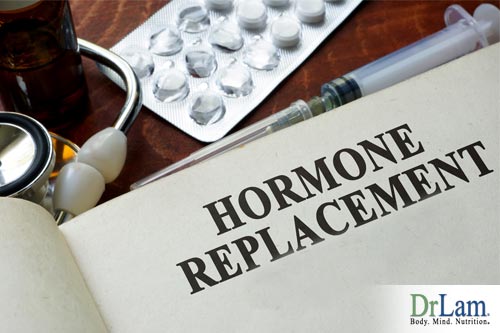
Most people, especially those living in a high-stress modern society with great demands, could be in a state of sub-clinical RMO and not know it. It's only when symptoms occur that steps are taken to investigate the cause. Unfortunately, the approach by conventional medicine of symptoms patching and compartmentalization, along with the demands of patients to get well quickly, only adds to the problems. Relieving symptoms without addressing the underlying trigger allow the underlying root cause to worsen over time, often until it is too late.
Always remember that the body has a built-in mechanism of removing reactive metabolites on a 24/7 basis. Very few of us have the luxury to live in a pristine environment free of all insults, and the body is prepared for that to a certain degree. RMO only occurs when the body’s maximum clearance level (MCL) has been exceeded, a process that can take years or decades.
When faced with reactive metabolite, the body mounts what is known as a reactive metabolite response (RMR). This is part of the body’s natural defense mechanism. First, the body’s anti-inflammatory response is automatically initiated because many reactive metabolites are inflammatory in nature. The inflammatory response activation requires significant energy expenditure. A draw down on the body’s nutritional reserve beyond what is available comfortably may result. The resulting lower energy state is undesirable. Many chemical reactions slows, and more reactive metabolites are generated. This, in turn, generates more inflammation. The body may then activate the adrenal glands to put out more cortisol, the anti-stress and anti-inflammatory hormone. Over time, the adrenals continue to be weakened if the insult is unrelenting as one enters and progresses through the stages of adrenal fatigue syndrome.
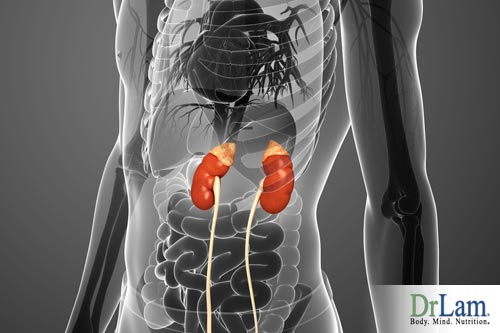 In addition to the adrenal glands being put on overdrive, the liver is also instructed to speed up its metabolic process to remove as many metabolites as quickly as possible in an attempt to reduce unwanted by-product overload. Concurrently, gut motility and assimilation starts to slow in order to conserve energy and reduce energy demand needed for transportation and the assimilation of food particles across the GI tract, to the liver, by way of the hepatic circulation. If the body perceives itself survival to be under threatened, the flight or fight response can be activated by the Autonomic Nervous System (ANS). Unfortunately, such a response, if allowed to go on unresolved, can further destabilize the body.
In addition to the adrenal glands being put on overdrive, the liver is also instructed to speed up its metabolic process to remove as many metabolites as quickly as possible in an attempt to reduce unwanted by-product overload. Concurrently, gut motility and assimilation starts to slow in order to conserve energy and reduce energy demand needed for transportation and the assimilation of food particles across the GI tract, to the liver, by way of the hepatic circulation. If the body perceives itself survival to be under threatened, the flight or fight response can be activated by the Autonomic Nervous System (ANS). Unfortunately, such a response, if allowed to go on unresolved, can further destabilize the body.
RMR, therefore, is a complex process involving many biochemical reactions in order to neutralize and remove toxin reactive metabolite. It is part of the body’s overall NeuroEndoMetobolic (NEM) Stress Response designed to help us overcome stress. This automated process operates 24/7. Unfortunately, this effort by the body may not work well for everyone. Those whose bodies are already weak cannot be pushed further in this heroic damage-control process.
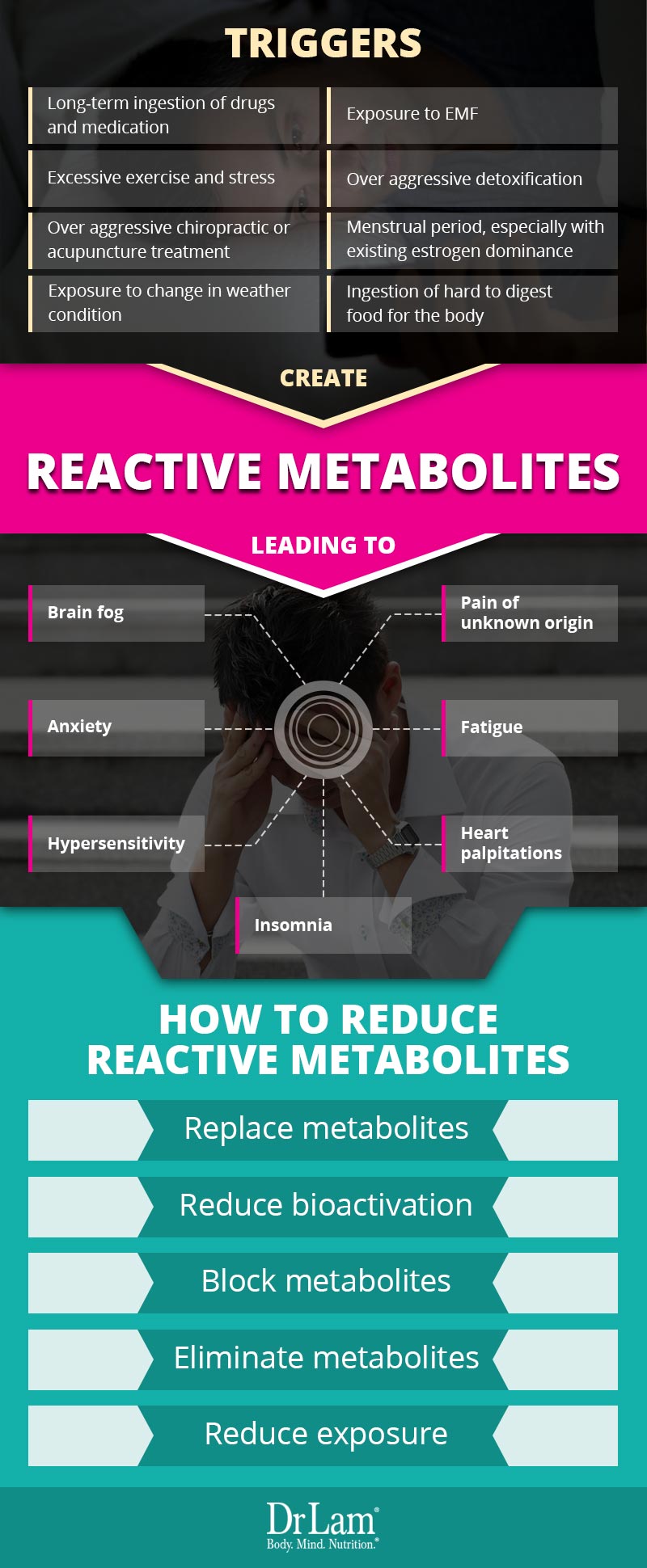
The NEM stress response comprises of 6 circuits, each comprising of organs and systems. They work in unison to help the body face stressful situations. A body undergoing reactive metabolite response placed undue stress on the detoxification circuit, which comprises of the liver, the extracellular matrix (ECM), and the immune system. Together, their job is to get rid of excessive reactive metabolites. When this circuit is working properly, you will not feel any symptoms of stress.
If this detoxification circuit’s function is dysregulated or compromised, clinical symptoms can be devastating. In particular, the combination of reactive metabolite overload and response, extracellular matrix overload, and liver overload can ruin your life as your immune system goes into disarray as well.
When the body is flooded with excessive and unwanted reactive metabolite beyond its ability to clear promptly, their accumulation within can be disruptive to our homeostasis. Remember that our body is a closed system. Metabolites circulate within until it is excreted through the lungs, skin, bowel, or kidneys. While in transit, the first system to experience congestion is the extracellular matrix (ECM). The ECM comprises spaces outside of each cell and is the highway upon which metabolite travel in. Excessive reactive metabolite will invariably lead to ECM pollution and insult. Like when there are too many cars on a highway, accidents will invariably occur, clogging up the system even more. It is a vicious cycle. Because the ECM is also responsible for intercellular messaging, disruption of transmission can occur, leading to defective signal transfer between cells.
Reactive metabolites invariably will be transported to the liver for breakdown. Inside the liver, this job falls mostly on the cytochrome P450 detoxification system. The excessive reactive metabolite is, therefore, a burden on the liver. It will signal the liver to go into overdrive and work harder. 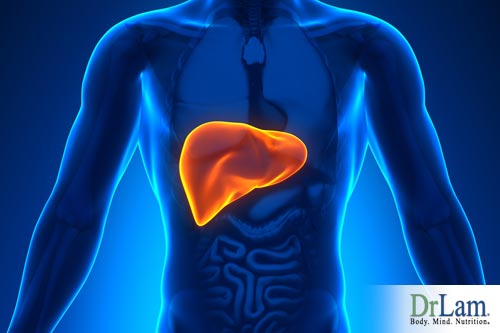 The body will be flooded with more downstream inert metabolites by design as the P450 detoxification system does its job to neutralize reactive metabolites into inert metabolites. Unfortunately, inert metabolites also have to be eliminated. They travel within the ECM as well to the kidneys for excretion. The ECM, therefore, is exposed to a second wave of metabolite overload. The body is being set up for a second blow, leading to what is known as retoxification reaction. On top of this, the liver can become congested as excessive inert and reactive metabolite accumulate within, leading to hepatotoxicity. Collectively, this vicious cycle of decompensatory cascade ultimately renders the entire body toxic, like a septic pool or swamp.
The body will be flooded with more downstream inert metabolites by design as the P450 detoxification system does its job to neutralize reactive metabolites into inert metabolites. Unfortunately, inert metabolites also have to be eliminated. They travel within the ECM as well to the kidneys for excretion. The ECM, therefore, is exposed to a second wave of metabolite overload. The body is being set up for a second blow, leading to what is known as retoxification reaction. On top of this, the liver can become congested as excessive inert and reactive metabolite accumulate within, leading to hepatotoxicity. Collectively, this vicious cycle of decompensatory cascade ultimately renders the entire body toxic, like a septic pool or swamp.
While the immune system can sense such insult and automatically activate its defense system to avoid uprising of secondary and stealth pathogen, autoantibodies so released can trigger unwanted symptoms that resemble a surge of auto-immune disease. Laboratory tests such as ANA titers are usually unremarkable or borderline normal, but signs of subclinical lupus and rheumatoid arthritis may surface. Laboratory tests for liver enzymes also are normal. Physical examination is invariably unremarkable. Physicians are misled into thinking that all is well at first. Patients are sent home with sleep aids and anti-depressants.
Over time, subtle sign of systemic toxicity, such as increasing food sensitivities, gastric bloating, constipation, exaggerated response to drugs, paradoxical reactions to medications, insomnia, brain fog, migrating pain of unknown origin, anxiety, psoriasis, autoimmune flare up tingling, dizziness, fatigue, heart palpitation, and electrolyte imbalance surfaces. Some even attribute all these symptoms to adrenal fatigue syndrome, chronic fatigue, or fibromyalgia. On deeper examination, however, it is clear that the symptoms are deep routed, well beyond any single condition can encompass. Physicians are left with no choice but to treat symptoms, hoping that would be productive. Aggressive physicians may start the patient on anti-inflammatory drugs, intravenous immunoglobulins, peptides, and immune modulating drugs based on clinical symptoms. Unfortunately, they usually fail. Patching one symptom after another is often an exercise in futility under such situation because the root problem goes unresolved.
Looking from afar and holistically, the body seems to be very irritable, but unfortunately, the root cause cannot be found by the allopathic approach. Something is wrong, but all medical workup continues to be largely normal. It is like walking down a street and seeing smoke coming out of a house’s windows when it is not supposed to. You know something is wrong, but the source of the problem cannot be located or appear evident.
Remember that RMR is a process that is neither good or bad. It simply describes the way the body responds when faced with reactive metabolites. The body’s ultimate state of function as a result of RMR activation dictates how well we feel as a whole clinically. Laboratory tests seldom provide a valuable guide. A detailed history remains the best tool available to the clinician. A normal healthy body should not feel any negative effect from RMR at all. The RMR kicks in when needed, removes reactive metabolites and returns the body to normal function without us knowing.
 Symptoms of mild RMR include: feeling heavy, lethargic, brain fog, bloating and other nonspecific discomfort. Collectively they pointed to a body with a heavy internal toxic burden, but it is still able to carry on daily chores of normal living. The state of overload can worsen if not resolved and reversed quickly. In severe cases, anxiety, panic attack, extreme fatigue can render the sufferer to be housebound and bedridden.
Symptoms of mild RMR include: feeling heavy, lethargic, brain fog, bloating and other nonspecific discomfort. Collectively they pointed to a body with a heavy internal toxic burden, but it is still able to carry on daily chores of normal living. The state of overload can worsen if not resolved and reversed quickly. In severe cases, anxiety, panic attack, extreme fatigue can render the sufferer to be housebound and bedridden.
Less obvious and almost universally ignored is how reactive metabolite response can be a trigger of other medical conditions such as seizures, auto-immune diseases, PMS, food allergies, chemical sensitivities, IBS, inflammatory bowel disease, and mood disorders. This is especially prevalent in those who are decompensated or constitutionally weak. Reactive metabolites increase liver congestion, extracellular matrix pollution, and reduces micro-circulation. Cellular messaging and transport can be compromised. The resultant symptoms such as those mentioned above can be so convoluted that defies conventional medical logic. The clinical picture can be made clear once the reactive metabolite perspective is factored in..
It is important to understand that as much as that the RMR is welcomed to rid the body of excess toxins, the process itself will generate metabolites, both inert and reactive. It takes the body energy to go through the process of removing reactive metabolites. As energy is expanded, the metabolic exhaust is generated. It’s analogous to the inevitable engine exhaust that comes as a result of moving a vehicle forward from a stationary position as one steps on the gasoline pedal. If the exhaust volume exceeds the car’s ability to neutralize and get rid of, exhaust metabolites from gasoline that can leak back into the car’s passenger compartment and poison the driver.
This analogy applies to the body as well. When the body is weak, pre-existing internal reactive metabolite load increases due to low clearance on a timely basis. If additional compounds are introduced into the body, more harm can result. No matter how “good” such compounds are, negative responses may arise. Such compounds can include certain hard to digest food, vitamins, herbs, and medications. The body can eventually be flooded in a sea of toxins as new reactive metabolites are generated and added to existing load from such compounds. The body is faced with energy drain not only removing preexisting enemies, but also its own casualty along the way.
If RMR is effective, symptoms mentioned above will subside. Brain fog resolves, hypoglycemic episode stabilized, bloating reduces, and fatigue diminishes. A person returns to normal function. If RMR fails to have an overall positive effect including a reduction in toxic reactive metabolite load, medications and supplements introduced may contribute and worsen with energy drain and toxic reactive metabolite built up as mentioned earlier. Unfortunately, this risk is seldom appreciated.
Each time a negative response emerges, the trend is for well-intentioned physicians and specialists to further their efforts. Most will dispense an ever-increasing dose of medications and natural compounds to reverse the situation without realizing that they could potentially be making matters worse by prescribing more medicine or supplements. Typically, the harder one tries, the more toxic one becomes when it gets to this stage because more medications mean more reactive metabolites being generated that accumulate in the body. Fatigue, anxiety, brain fog, bloating and constipation worsen with each attempt as the threshold for symptoms lowers. Hypersensitivity and paradoxical reactions become rampant as the body becomes more inflamed with each well-intentioned rescue efforts.
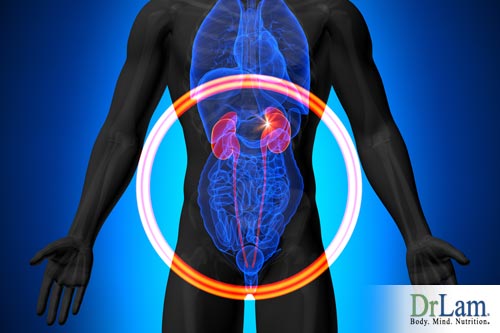 Those who already have low resistance are most vulnerable. They include those with preexisting weak constitutional strength, congestion of the extracellular matrix, ongoing gastric assimilation slowdown, in a catabolic state, systemic inflammation, stealth virus overload and, or kidney weakness. Adrenal crashes may be triggered leading to a viscous decompensatory cycle that is destabilizing. The clinical picture becomes convoluted and defies conventional medicine logic on the surface.
Those who already have low resistance are most vulnerable. They include those with preexisting weak constitutional strength, congestion of the extracellular matrix, ongoing gastric assimilation slowdown, in a catabolic state, systemic inflammation, stealth virus overload and, or kidney weakness. Adrenal crashes may be triggered leading to a viscous decompensatory cycle that is destabilizing. The clinical picture becomes convoluted and defies conventional medicine logic on the surface.
Worsening fatigue, panic attack, loss of memory, irritable bowel, reactive hypoglycemia, heart palpitation, joint pain and severe insomnia ultimately render a person homebound. One can be bedridden and ambulatory. Multiple visits to the emergency room are common, but sufferers are usually sent home as laboratory test are often normal. Multiple specialists are sought as more tests are conducted to find the “smoking gun”. This effort is usually futile. Genetic tests include MTHFR may show dysregulation, but recovery effort usually fails after a temporary improvement at best. Trying to find the “smoking gun” and treating minute abnormality is the right thing to do at the wrong time. The fragile body may not be able to tolerate such heroic attempts. Any therapy, whether by food, drug, or nutritional supplements, designed to reverse the situation, including the use of immune therapy, oral medications, hormones, glandular, and vitamins, IV therapy, chelation, fecal transplant, antibiotic, has a high risk of failing and worsening the clinical state. Finally, the sufferers are abandoned as doctors give up.
Fortunately, RMR is a relatively rare event. Unfortunately, when it happens, the body is invariably weak, and negative symptoms abound. Anyone who has gone through this experience will tell you it is a “living hell”. Recovery needs to first focus on conducting a comprehensive review of compounds that can be the culprit(s). This is a very challenging process because by the time a negative RMR is presented with clinical symptoms, sufferers are often in a weak state, taking multiple medications and nutritional supplements that are hard to sort out. Laboratory tests are usually not contributory as they are not sensitive enough to identify the source of reactive metabolites. A detailed history by a knowledgeable health practitioner versed not only in the intrinsic properties of each compound but also their clinical ramification are needed. Challenges need to be issued to confirm the root cause. Blindly removing all compounds abruptly in hopes to eliminate RMR is not recommended as it can make matters worse.
Compounds are identified qualitatively, their removal needs to be carefully carried out under supervision. Removing the culprits normally requires a slow titration process to create a ‘soft landing” and avoid the risk of rebounds or withdrawal effects. An excessive negative effect of RMR may be neutralized in some cases. By stabilizing the body with nutritional support, self-healing speed is improved. 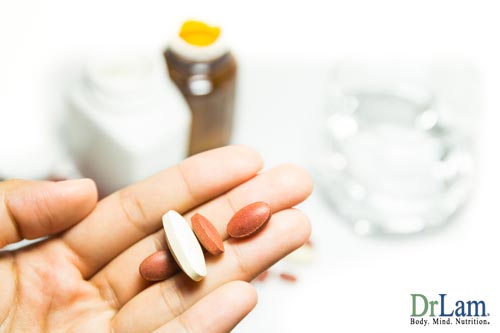 As the body stabilizes, negative symptoms spontaneously reduce. At the proper time, as the body regains its strength, the rebuilding process of increasing the nutritional reserve can begin. This rebuilding process needs to be slow and much patience is needed in order to prevent relapse. Even in the best of hands, some trial and error is needed as the body is in such a fragile state. It can get worse even with the slightest change in any direction.
As the body stabilizes, negative symptoms spontaneously reduce. At the proper time, as the body regains its strength, the rebuilding process of increasing the nutritional reserve can begin. This rebuilding process needs to be slow and much patience is needed in order to prevent relapse. Even in the best of hands, some trial and error is needed as the body is in such a fragile state. It can get worse even with the slightest change in any direction.
Much time is therefore needed to first understand the state of function before embarking on a recovery program. Too impatient or too fast a recovery approach can backfire and is a common clinical mistake. At each step along the way, the body is constantly monitored to ensure the recovery path is on track and small steps made in the right direction.
Examples of overall strategies, that can be considered, includes:
There are no effective medications to reduce Reactive Metabolite Response. In fact, most make the situation worse. Nutritional approaches remain the best option, if carried out properly. They include:
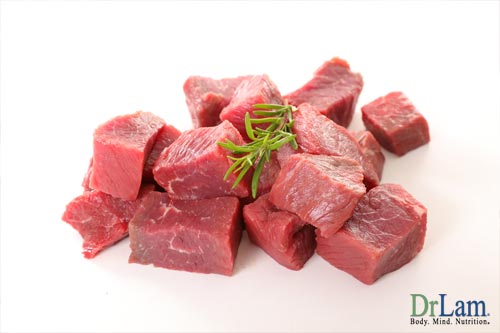
 The compartmentalization approach of conventional medicine needs to take a back seat other than in acute situations. Common sense needs to prevail. For example, instead of taking vitamin D orally as a supplement which has to be metabolized by the liver, adequate sunshine should be provided to allow the body to self regulate. Adrenal breathing exercises focusing on the parasympathetic nervous system can balance the sympathetic nervous system overtone. Mental adaptation and resilience training can reduce excitatory neurotransmitters and focus on inhibitory ones such as GABA for better sleep. Many different strategies are available. The exact protocol varies from person to person. What works well for one person can make another worse.
The compartmentalization approach of conventional medicine needs to take a back seat other than in acute situations. Common sense needs to prevail. For example, instead of taking vitamin D orally as a supplement which has to be metabolized by the liver, adequate sunshine should be provided to allow the body to self regulate. Adrenal breathing exercises focusing on the parasympathetic nervous system can balance the sympathetic nervous system overtone. Mental adaptation and resilience training can reduce excitatory neurotransmitters and focus on inhibitory ones such as GABA for better sleep. Many different strategies are available. The exact protocol varies from person to person. What works well for one person can make another worse.To be effective in neutralizing negative reactive metabolite responses, multiple nutritional strategies are needed within a comprehensive healing framework to slowly help the body and give the body tools to help itself.
A laboratory test can be helpful if properly given at the right time and under the right circumstances. Generally, this is when the body stabilizes and is not in the beginning phases. Remember, not every “abnormal” lab needs to be administered. The right thing, done at the wrong time, can worsen the situation.
One of the most common clinical mistakes is a shotgun approach to treat laboratory abnormalities, as if they were the “smoking gun”, without looking at the body from afar holistically. It is easy to patch symptoms compared to solving the root cause. Over-reliance on laboratory tests, and instituting aggressive therapy, including methylation, chelation, detoxification, antibiotics, mineral rebalancing, acupuncture, tissue manipulation, hydrogen peroxide therapy, IV nutrition may sound good and appear logical on paper. A temporary benefit may be experienced in some case, but generally, they lead to worsening overall outcomes, with time, unless the body is strong. The reason is simple; they all have the potential of increasing reactive metabolite responses.
There is no “bad” modality. They all can be good and can also be bad, depending on the body’s state. What is commonly “good” can be bad if the body is not ready. Antibiotics prescribed for Lyme, or nystatin for systemic Candida, for example, can crash a body easily. Even well-intentioned tests, such as the ACTH challenge test (to rule out Addison’s Disease), is not without risk. The use of drugs such as cortisol, can backfire right from the beginning and defy conventional medical logic.
What is needed, is a program titrated to fit the body’s need, in each step of the recovery process. Well-intentioned physicians ultimately are at a loss and eventually give up in such situations. One can get lost in the forest if too close to the trees. Yet if one steps back and looks at the entire clinical picture within a reactive metabolite response perspective, some clarity should emerge, and with that, a better sense of direction for the clinician.
Close clinical monitoring is needed in order to fully understand the degree of resilience and reserve the body actually has at every step of the recovery. The exact path varies from person to person and that is why extensive clinical experience is critical.
 Yes, the road to recovery is tedious and complex, and necessarily so, if a long term positive outcome is the goal. Short term plans don’t work well because the problem is deep seeded. Those who are successful invariably have a positive outlook on life, realistic in their expectations, patient, and have an experienced clinician to guide them each step along the way. Occasional setbacks are inevitable. Young people tend to recover faster, but they also are more susceptible to relapses. Older people need not give up. Remember that reactive metabolite response is simply a process that alerts us to underlying root dysfunction. Always focus on the cause rather than symptom control, while providing the body and allowing it to heal. This, in our experience, is the preferred methodology that has repeatedly proven to yield positive long term results.
Yes, the road to recovery is tedious and complex, and necessarily so, if a long term positive outcome is the goal. Short term plans don’t work well because the problem is deep seeded. Those who are successful invariably have a positive outlook on life, realistic in their expectations, patient, and have an experienced clinician to guide them each step along the way. Occasional setbacks are inevitable. Young people tend to recover faster, but they also are more susceptible to relapses. Older people need not give up. Remember that reactive metabolite response is simply a process that alerts us to underlying root dysfunction. Always focus on the cause rather than symptom control, while providing the body and allowing it to heal. This, in our experience, is the preferred methodology that has repeatedly proven to yield positive long term results.